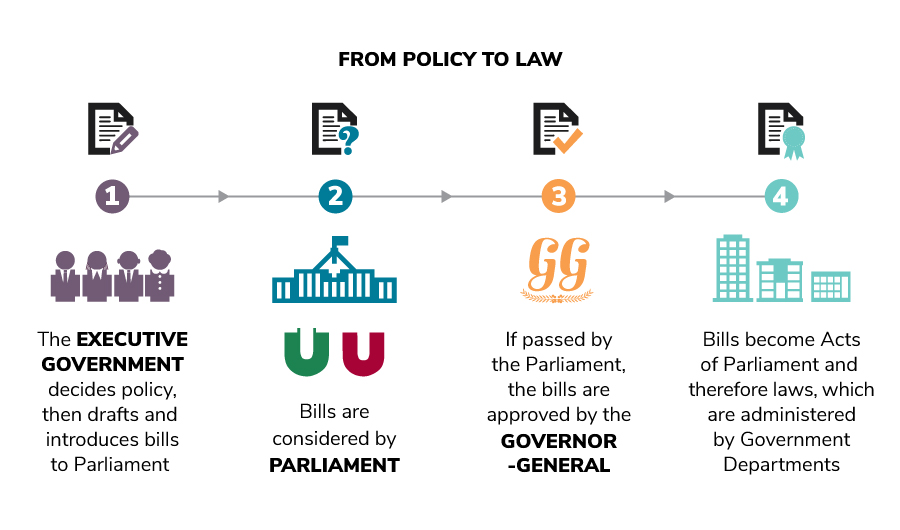How a bill becomes a law
The way that bills become laws starts with the Executive.
The Executive: The Prime Minister and Cabinet.
The Executive introduces and drafts bills to the parliament. The Prime Minister and the Senior Ministers decide on which bills to introduce to the parliament in cabinet meetings.
Then the process moves on to the parliament.
The Parliament: The House of Representatives and the Senate.
Bills are considered by parliament. People debate and make amendments to a bill that is in the process of being passed or not. Committees receive a bill which the house of representatives or the senate send. The committees seek information on the bill and gain the public perspective from interest groups or people who would be impacted. The committee then makes a report about the information and evidence gathered from the perspective of the public whether they support the bill or not. To explain disagreement or agreement towards a new bill, members of parliament debate and make speeches about their opinion. Members of parliament vote by saying aye or no and moving to the right or left side of the speaker’s chair if the vote is unclear.
If the bill is passed the bill is taken by the sergeant at arms to the senate where a similar process is followed.
Governor General: Kings representative
If a bill is passed it is then sent to be approved by the governor general who gives the royal assent.
The departments: Eg. Department of Home Affairs.
After bills are passed, becoming acts of parliament, government departments must put the laws into action.
For example, in the case of allowing 16-year-olds the chance to vote the department has to, after the bill has been given the royal assent, spread the news about it, in newspapers, news interviews, social media, and informing schools about the bill. The minister for youth and department has to update electoral rolls, introduce new policies around the bill and introduce new procedures and communication.
This is how bills become laws.
